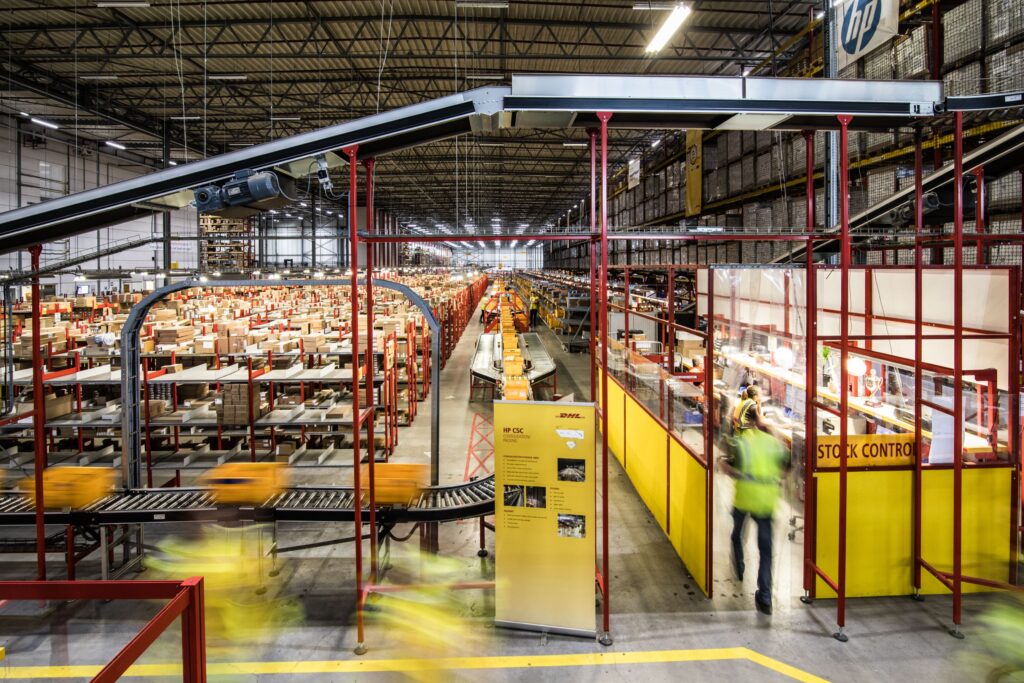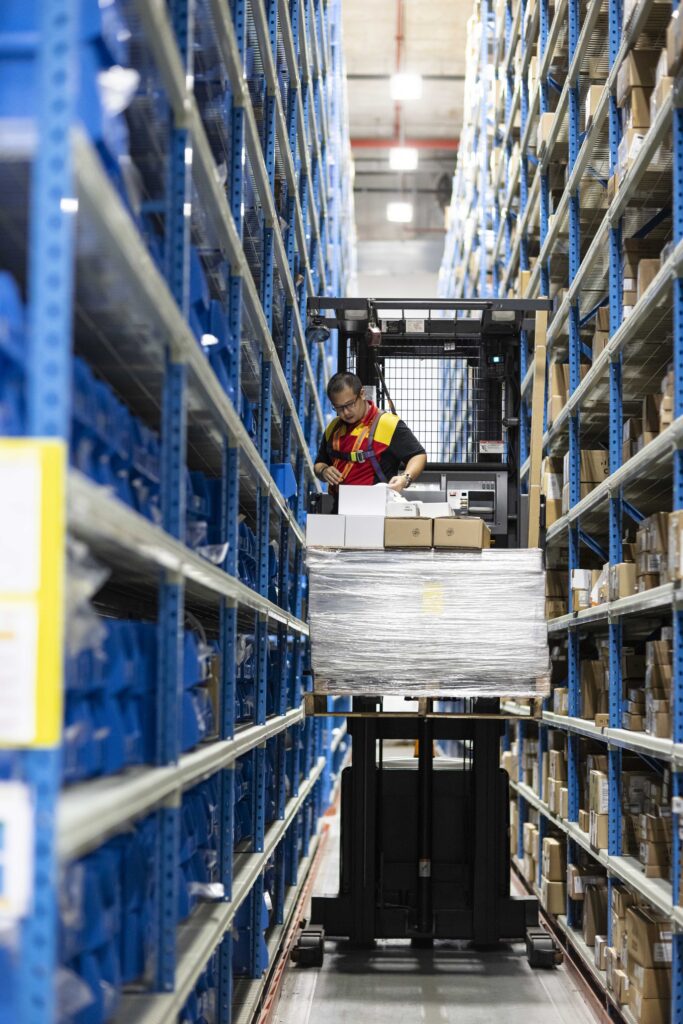A Forrester trend report posits that the future of supply chains lies in building resilient, sustainable supply networks. Spurred by the pandemic, organisations have recognised the urgent need for platforms that enable prompt, collective responses to demand fluctuations and supply bottlenecks.
A study by Kenan Institute similarly revealed that the pandemic forced organisations to rethink their supply chain strategies, particularly around supplier location, lean operations, and risk assessment.
These shifts have not gone unnoticed by major logistics players like DHL.

Mihaela Isac, CIO for Asia Pacific at DHL Supply Chain, spoke about the technologies and innovations reshaping the supply chain as the industry recovers from the pandemic.
Rapid technology adoption
“From a technology standpoint, the pandemic accelerated the adoption of digital solutions within the supply chain in Asia, from automation to real-time data analytics, helping us build smarter, more responsive supply chains,” said Isac.
She shared that over 85 per cent of DHL Supply Chain’s facilities in Asia Pacific are now implementing digitalisation projects. These initiatives are key to optimising operations, improving decision-making, and increasing customer supply chain agility.
The fast-paced development across Asia Pacific has also required DHL Supply Chain to manage disruptions more effectively and build predictive models that strengthen resilience across the entire network.
A crucial element of this evolution is integrating artificial intelligence (AI). AI-powered tools transform how businesses manage inventory, forecast demand, and optimise delivery routes. Data analytics is central in enabling real-time visibility across the supply chain.
Isac highlighted some of DHL Supply Chain’s technology deployments, including Connected Control Tower solutions, which collect and analyse data from various sources to support better, faster decision-making. Predictive analytics has also helped the company and its clients anticipate disruptions, optimise stock levels, and adjust supply chains proactively.
“Real-time visibility over the supply chain also allows for the optimisation of routes, reduced fuel consumption, and increased operational efficiency, which helps us deliver faster and more cost-effective solutions to our clients,” she added.

Challenges in the shift
While adopting new technologies has accelerated, it hasn’t come without challenges. Lockdowns and reduced warehouse staffing during the pandemic prompted the automation of many manual tasks, but transitioning at speed wasn’t always smooth.
“It is encouraging to see the shift, but it also had challenges,” Isac admitted.
She pointed to issues such as data fragmentation, difficulties integrating new systems with legacy infrastructure, and scaling innovations globally, especially when data structures vary across regions.
“As this was fairly new to the logistics sector at the time, there weren’t many options available that catered to our needs. It is different as we have embarked on a journey to standardise our warehouse management system across the region and work on API integration with our customers’ platforms of choice,” she explained.
Concerns also surrounded the technology's scalability and availability. The increase in digital touchpoints raised the threat of cyberattacks.
“With more systems and automation in place, it is a complex environment to manage. Customers want to understand what we have in place to keep their operations safe,” said the DHL executive.
Innovations in the supply chain ecosystem
Isac believes that the efficiency of supply chains relies on the trust and collaboration among various players.
“Some innovations that will support this ecosystem include AI and machine learning, as well as big data,” she said. “AI-powered tools and machine learning algorithms enable us to dynamically adjust supply chain decisions, such as routing shipments or scheduling productions, by analysing real-time data across multiple partners.”
She explained that these insights help minimise delays, optimise resource allocation, and adapt to shifting conditions such as weather events or geopolitical changes. Meanwhile, cloud-based solutions support seamless integration with third-party systems, enabling efficient data sharing and workflow coordination.
Within DHL Supply Chain, generative AI (Gen AI) is used to improve various internal processes. One application automatically sorts, cleans, and analyses customer data. In sales, Gen AI tools help analyse customer needs faster, making proposals more personalised and accurate.
“Additionally, commercially available Gen AI solutions are used in our legal and customer support teams to assist with tasks like summarising queries, processing legal documents, and resolving customer issues,” Isac added.
The company is also piloting digital twins or virtual models that simulate real supply chain scenarios. These allow for real-time monitoring and analysis of operations, revealing inefficiencies, bottlenecks, and areas that require improvement.
DHL Supply Chain’s control tower solutions offer centralised, real-time visibility and help facilitate collaboration with partners on inventory management, transportation routes, and stock levels. The company also leverages predictive analytics to share insights with key partners, enabling everyone in the ecosystem to proactively adjust operations based on anticipated changes in demand or supply.
They have also shared warehousing models and multi-client distribution centres to enhance collaboration. This will optimise resource utilisation while enabling closer partnerships with clients and suppliers.
Automation, especially robotics, has also significantly transformed DHL Supply Chain’s operations. Isac revealed that over 2,000 robotic systems are now live across Asia, streamlining processes like order picking and inventory management.
“This allows our human workforce to focus on more value-adding areas instead of performing manual tasks. Furthermore, robotics improves speed and accuracy and addresses labour shortages, enabling us to meet high customer expectations without adding labour,” she said.
She added that AI-powered predictive analytics are revolutionising how companies forecast demand, manage stock, and optimise delivery routes.
“Our recent deployment of AI-based control towers has greatly enhanced our agility, giving us predictive insights to mitigate risks and adjust to shifting customer demands,” Isac shared.
Beyond core operations, AI also improves enterprise-level processes across finance, HR, and customer service. “Using Gen AI for data cleansing or generating documents enhances operational efficiency and ensures a seamless customer experience,” she explained.

Key hurdles in tech adoption
Despite the promise of AI and automation, integrating these technologies seamlessly into existing systems remains a significant challenge.
“Our major partners may not be ready to adopt new technology. Many businesses need digital upgrades to meet the demand for agility, efficiency, and sustainability and the high cost of implementation is also a strong barrier to immediate adoption,” Isac noted.
New machinery and automation systems also lack skilled experts, making it harder for vendors to understand the product deeply or troubleshoot rare issues effectively.
“These problems can only be resolved in the long run with further development and higher adoption of digital initiatives in the industry,” she said. “Our approach is to partner with vendors for win-win scenarios, where they can develop their products in real-life scenarios—our warehouses—while we get value through better products. This can help all parties advance the digital agenda.”
Sheadded that addressing the skills gap is also critical.
“Our focus has been on creating a robust digital training framework. By blending upskilling with hands-on experience, we empower our teams to confidently leverage digital tools—from AI-driven insights to advanced analytics platforms—which are crucial for remaining agile and responsive in this fast-evolving landscape.”
Supply chain in 2025 and beyond
Looking ahead, Isac sees AI continuing to drive technological advancements, helping create “smarter, more interconnected supply chains that can respond to global dynamics with greater agility.”
As AI accelerates innovation, businesses can identify more use cases that support speed, agility, customer service, and operational efficiency.
“The path will continue with greater automation and robotics deployed across operations,” she said. “Moving forward, our priorities will be built on the foundation of technology leadership—fostering innovation, challenging the status quo, and applying skills like customer and user-centricity to invest in the right areas.”





